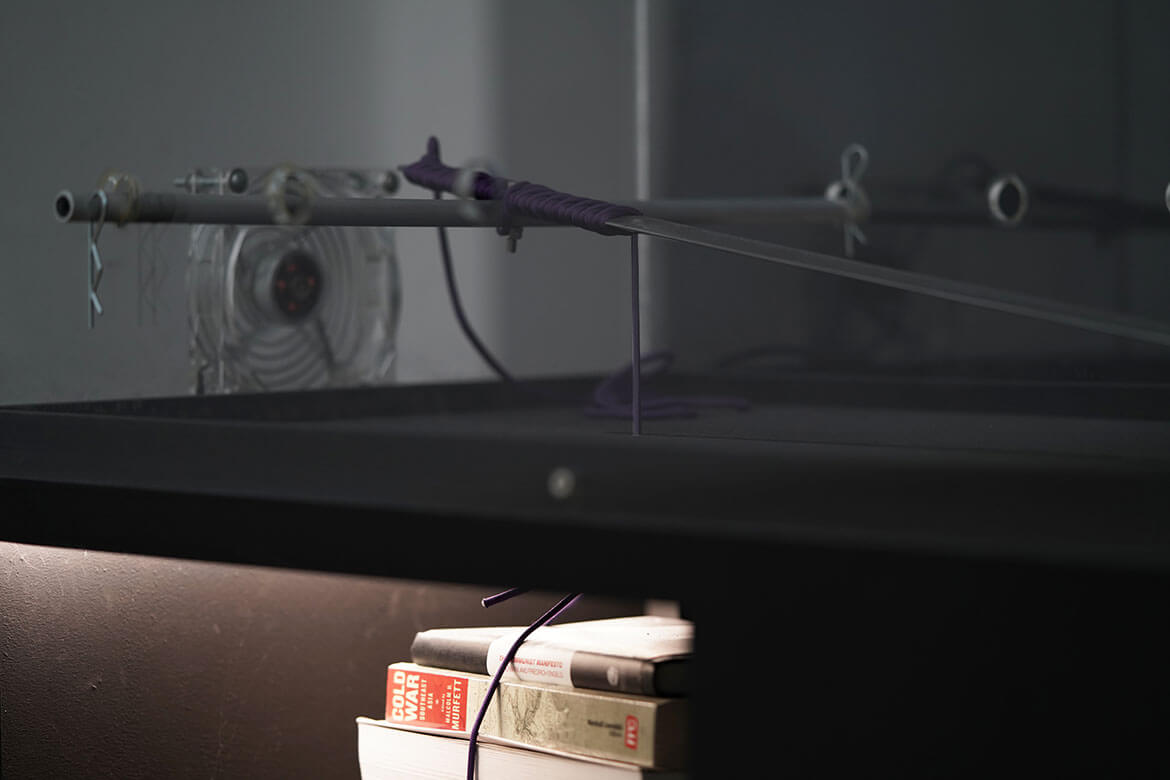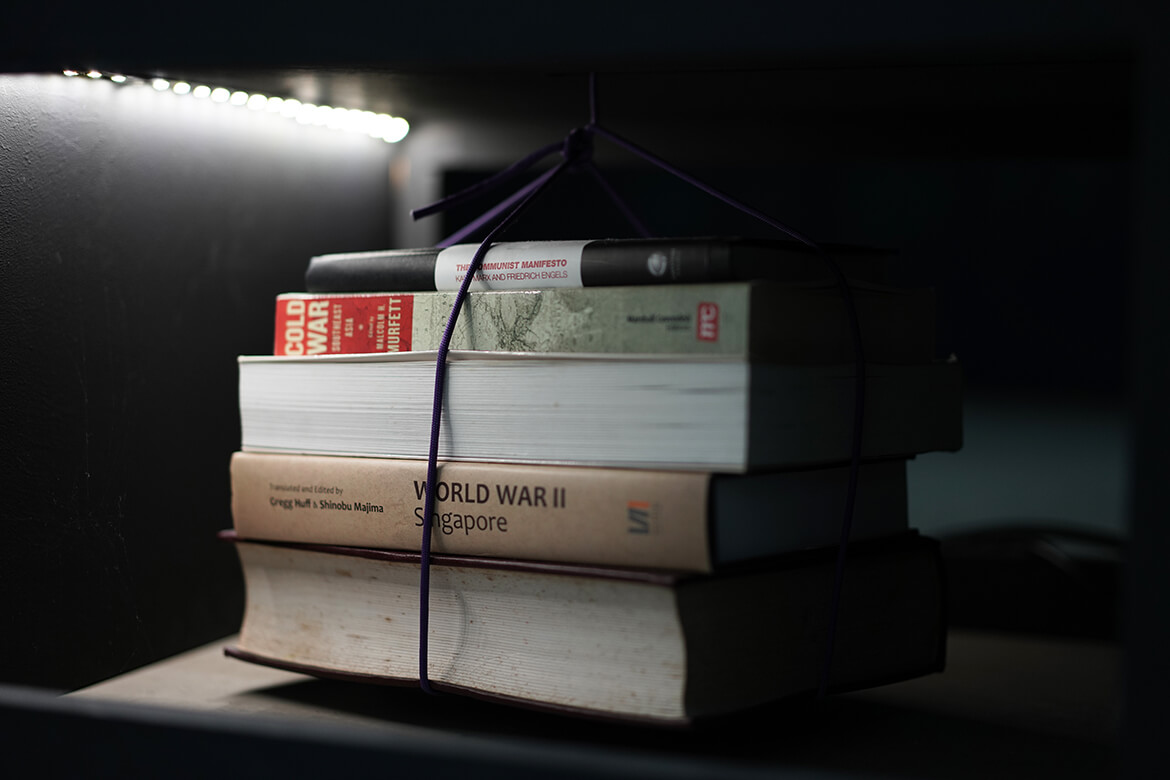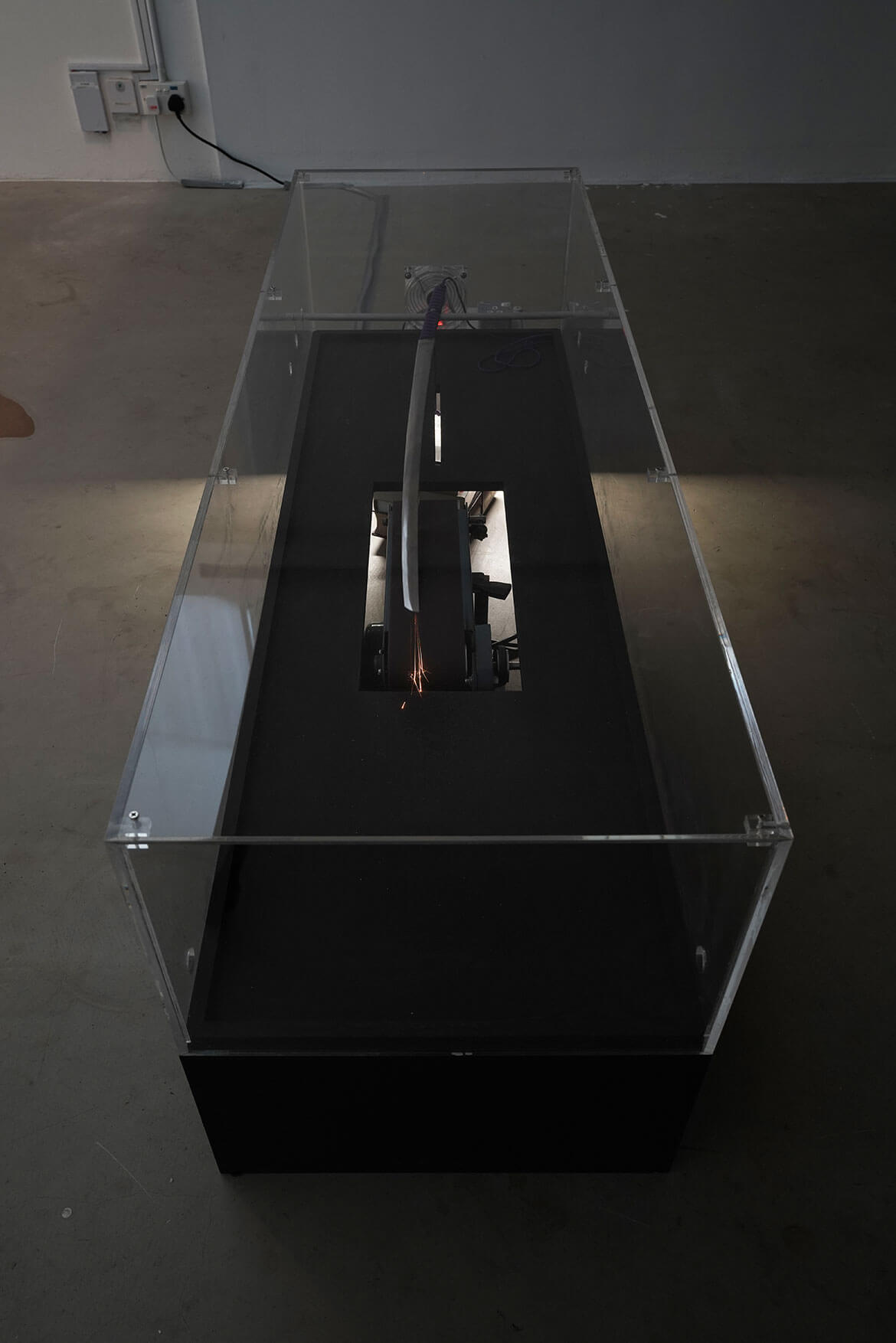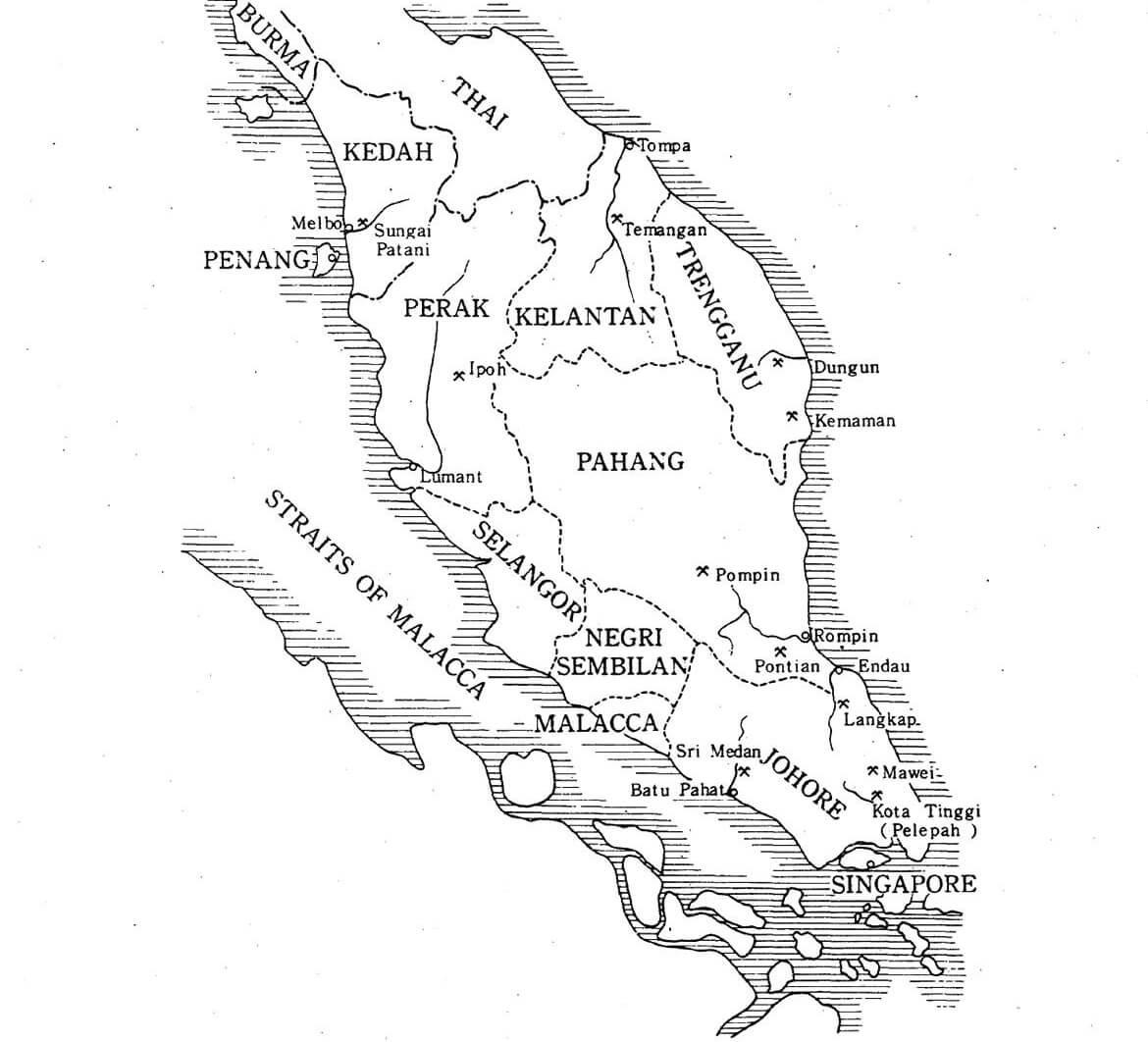日南製鐵 Rinnan Steel Mill – Grind
Like its counterpart, this work centres on a World War II-era shin guntō (new military sword). In this case, however, it is a new steel blade replicated by the blacksmith, who forged it after the original sword. The focus of this installation is the process of grinding, which gives the blade its ‘cutting edge’ and therefore its purpose, while simultaneously and unavoidably reducing the steel object. The grinding of the blade causes sparks to be emitted, yet the red-hot steel filings cool down quickly and become invisible to the naked eye. The vitrine encasing the grinder thus presents the spectacle of this fleeting glow—a result of this duality of making and unmaking—all while collecting the steel filings, which have the potential to be used in future.
In order for the work to function, it also has to engage in other acts of balance. Books relating to the research are attached to the blade, acting as a weight to pull the blade towards the grinding surface; the machinery operates at timed intervals to prevent it from burning out due to the heat that it generates. At the intersection of the blade and its grinding surface, then, is a layered precariousness, a distillation of the region’s violent history which was marked as much by large-scale production as it was by large-scale destruction.
Media: Replicated Japanese shin guntō steel blades using Malaysian steel, grinder, wood, acrylic, parachute cord, power supply timing circuit, LED light, books
Dimensions: 150 x 60 x 50cm
Text by Berny Tan





Distribution of Iron Mines in Malay Peninsula

(Source: Toru Kumamaru, Nippon Seitetsu to Tekko shigen (Japan Iron and Steel corporate history editing comittee, 1959)
Email: antchin69@hotmail.com | IG: anthonychin.art